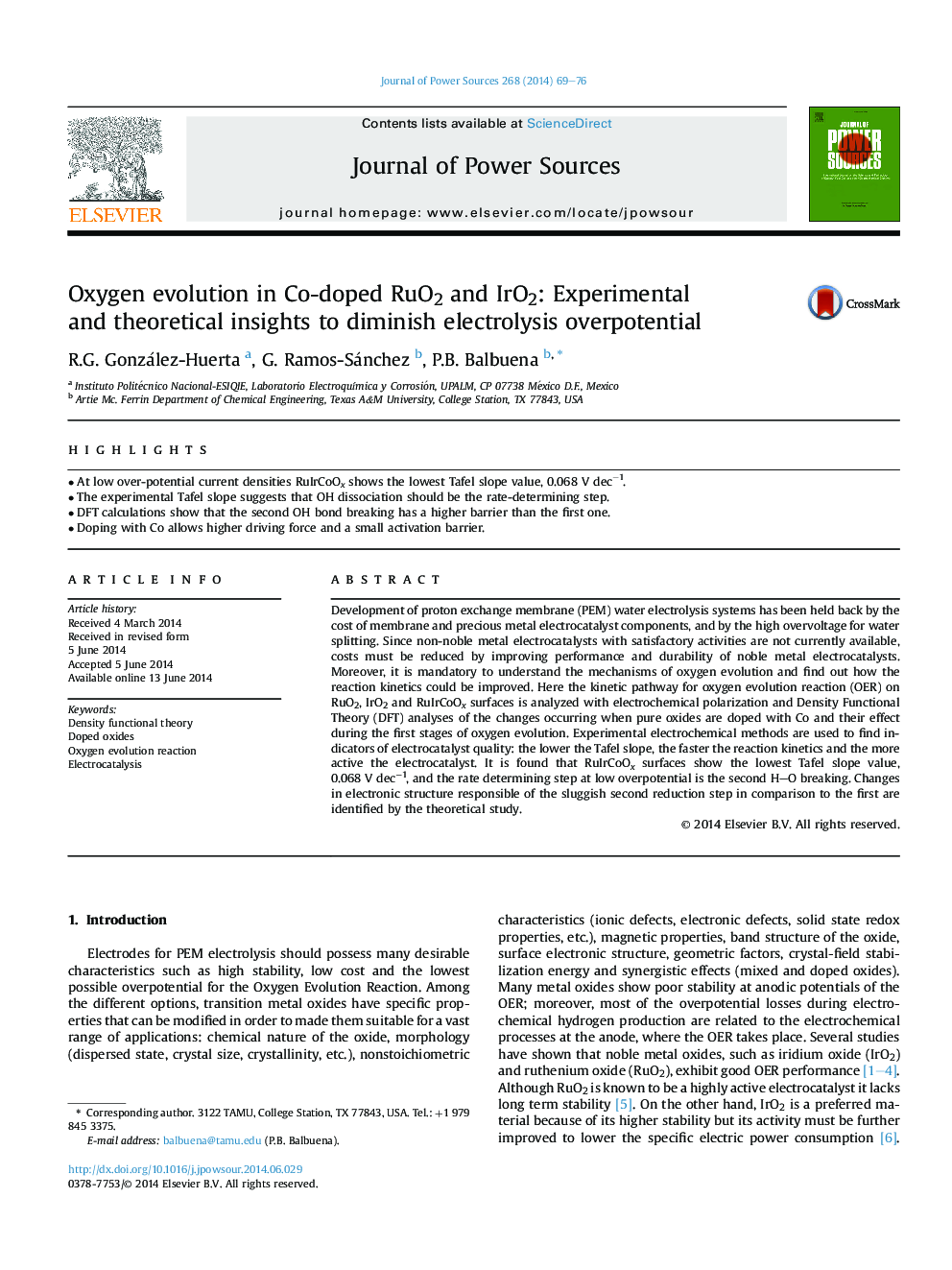| Article ID | Journal | Published Year | Pages | File Type |
|---|---|---|---|---|
| 7736219 | Journal of Power Sources | 2014 | 8 Pages |
Abstract
Development of proton exchange membrane (PEM) water electrolysis systems has been held back by the cost of membrane and precious metal electrocatalyst components, and by the high overvoltage for water splitting. Since non-noble metal electrocatalysts with satisfactory activities are not currently available, costs must be reduced by improving performance and durability of noble metal electrocatalysts. Moreover, it is mandatory to understand the mechanisms of oxygen evolution and find out how the reaction kinetics could be improved. Here the kinetic pathway for oxygen evolution reaction (OER) on RuO2, IrO2 and RuIrCoOx surfaces is analyzed with electrochemical polarization and Density Functional Theory (DFT) analyses of the changes occurring when pure oxides are doped with Co and their effect during the first stages of oxygen evolution. Experimental electrochemical methods are used to find indicators of electrocatalyst quality: the lower the Tafel slope, the faster the reaction kinetics and the more active the electrocatalyst. It is found that RuIrCoOx surfaces show the lowest Tafel slope value, 0.068Â VÂ decâ1, and the rate determining step at low overpotential is the second H-O breaking. Changes in electronic structure responsible of the sluggish second reduction step in comparison to the first are identified by the theoretical study.
Related Topics
Physical Sciences and Engineering
Chemistry
Electrochemistry
Authors
R.G. González-Huerta, G. Ramos-Sánchez, P.B. Balbuena,
